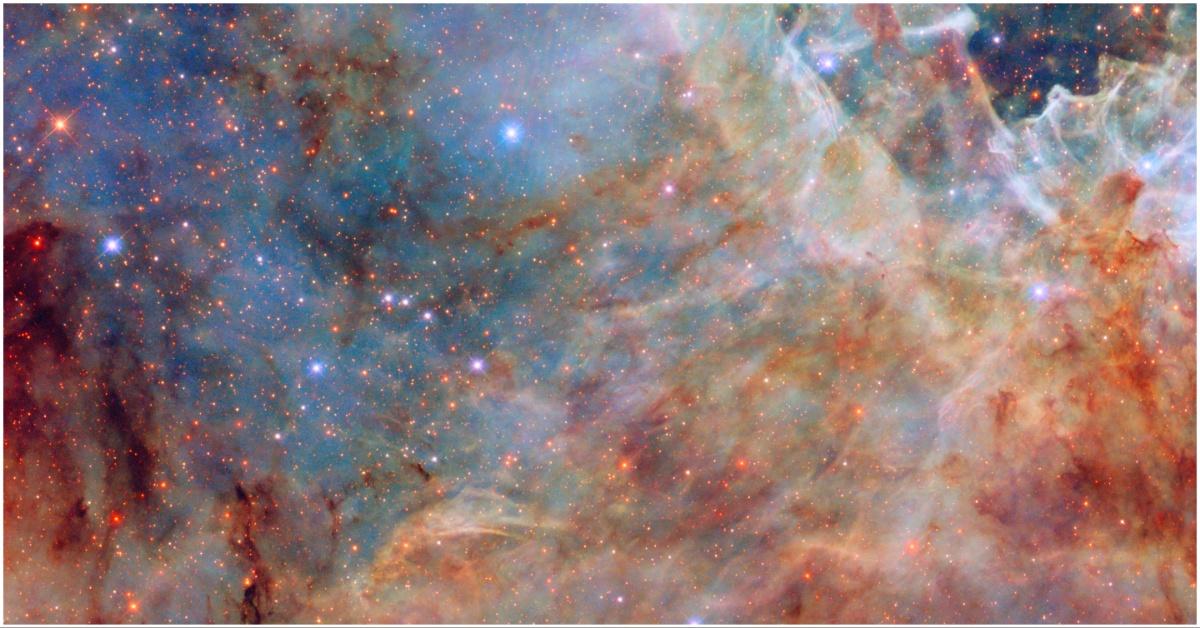What NASA Found on Mars Could Rewrite the Story of Life Beyond Earth’s Boundaries
NASA is seemingly getting closer and close to proving life may have once existed on the planet Mars.
Published Sept. 16 2025, 1:47 p.m. ET

For as long as we’ve looked up at the night sky, we’ve all asked variations of the same question: Are there aliens up there? Did NASA find life on Mars? The short answer is no — we haven’t uncovered little green aliens just yet. Here’s the exciting part: what NASA did find could be the strongest hint so far that Mars once had the right ingredients for life.
In 2024, per a report from NASA, NASA’s Perseverance rover drilled into a chunk of reddish mudstone in Jezero Crater, a place scientists have been eyeing for years. The rock, nicknamed Cheyava Falls, wasn’t much to look at on the surface. Inside, however, things got interesting.
Scientists spotted unusual chemical compounds and strange patterns in the rock that — at least on Earth — are often tied to microbial life. Think of it like stumbling across a trail of footprints in the sand. You don’t see the person, but you know someone was probably there.

What NASA found on Mars looks a lot like signs of ancient life from a long time ago.
The sample, officially called Sapphire Canyon, was filled with organic carbon, iron phosphate, and iron sulfide. Those names might sound like they belong in a high school chemistry book, but here’s the simple version: on Earth, those ingredients often show up where life once thrived. Even more intriguing were the rock’s “leopard spots” and small nodules — patterns that can form when microbes interact with minerals in watery, low-oxygen environments. NASA called them “potential biosignatures,” which is science-speak for “hey, this could be life-related … or not.”
According to Reuters, the evidence suggests Jezero Crater once had flowing water under conditions that could have been cozy enough for microbes to survive. Now, that idea isn’t new — scientists have believed for years that Mars was once wetter and warmer — but this new find adds some serious weight to the theory.
Now, before we pop the champagne, here’s the catch: these same chemical clues can form without life. Nature has its own way of cooking up similar patterns through non-biological processes. That’s why NASA is being careful not to overhype the results. As the Associated Press put it, the findings are fascinating, but far from a smoking gun.
If you’ve followed space news before, this might sound familiar. Back in the 1990s, a Martian meteorite was thought to contain fossilized microbes. The story made headlines everywhere — even President Bill Clinton addressed it. After years of debate, however, most scientists agreed the so-called fossils weren’t living organisms after all. Nobody at NASA wants to repeat that kind of false alarm, so they’re moving carefully this time around.
So, what do we know for sure about this discovery?
Here’s the bigger picture: even if the results turn out to be geochemical and not biological, they still change the way we think about Mars. They show that the planet was more complex and dynamic than we imagined. Furthermore, if Mars had the right conditions once to support life, who’s to say other planets or moons in our solar system don’t or didn't as well?